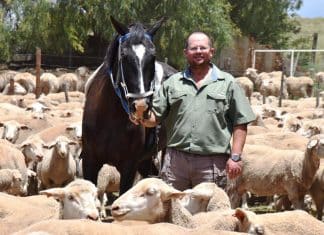Estimated reading time: 5 minutes
- Rift Valley fever is a serious insect-borne viral disease that not only occurs in sheep, goats and cattle, but also poses a great health risk to humans.
- Mosquitoes are carriers of Rift Valley fever.
- Producers can expect outbreaks because of the high early rainfall that created favourable conditions for the survival of the virus in Aedes mosquito eggs.
- Once the initial outbreak is over, other opportunistic mosquito species will transmit the disease directly from infected to susceptible animals.
- Infection in humans typically occur when they come into direct contact with the virus during post-mortem examinations or when handling aborted foetuses.
People say little things shouldn’t bother you – but then they certainly haven’t spent a night with a mosquito or two in a room. These pesky insects also cause Rift Valley fever that, given the ample rain received last year and early this season, can spread over large parts of the country.
Dr Jan du Preez, author and livestock disease specialist, says Rift Valley fever is a serious insect-borne viral disease that not only occurs in sheep, goats and cattle, but also poses a great health risk to humans.
The virus was first isolated in 1930 during an epidemic among sheep in the Rift Valley region in Kenya. From 1950 to 1956, disease outbreaks in cattle and sheep were reported on several occasions in South Africa. People also fell victim to the disease. Livestock producers suffered considerable damage during another outbreak in 1975, and several people died due to the disease.
Rainfall is the main determiner of the cycles of disease occurrence. It all starts with virus-carrying mosquitoes that bite livestock and infect them with the disease, explains Dr Du Preez.
Virus transmission
Dr George de Kock of Cape Wools SA says the research by international organisation, Eco Health Alliance (EHA) is helping to expand the available information pertaining to Rift Valley fever. Producers can expect outbreaks because of the high early rainfall that created favourable conditions for the survival of the virus in Aedes mosquito eggs.
The Rift Valley fever virus survives in these eggs, which means that hatched mosquitoes already carry the virus. The virus is transmitted when infected mosquitoes bite livestock, with the animals then serving as a virus source that can infect hundreds of other female Aedes mosquitoes which, in turn, transmit it to their offspring.
Infected mosquitoes transmit the virus to susceptible animals, thereby helping to maintain and expand the circulating virus population. The infected mosquito population grows large enough over time to cause a disease outbreak. Direct infection can also occur when livestock come into contact with aborted foetuses or other contaminated material.
Once the initial outbreak is over, other opportunistic mosquito species will transmit the disease directly from infected to susceptible animals. Favourable climatic conditions can lead to a large, widespread outbreak.
According to EHA’s research, the first outbreaks may occur in the Free State and Northern Cape as these areas have the right type of soil and plants, as well as water pans, for the virus to survive in mosquito eggs.
Prevention via vaccination
Vaccinating livestock, says George, is a sure-fire way of putting a stop to the multiplication cascade of the mosquito population and hence the outbreak of Rift Valley fever. If the livestock in those areas in which disease outbreaks are expected to occur first are successfully vaccinated against the disease, host mosquitoes will have a much tougher time spreading the virus.
Rift Valley fever outbreaks usually occur during the late summer of a wet period when conditions are favourable for the hatching of host mosquitoes. There is a greater risk that susceptible livestock running in low-lying areas with swamps and pans will contract the disease during this period.
Symptoms to look out for
Lambs and kids are highly susceptible to the disease during the first 14 days of life – they become ill very quickly, showing symptoms such as a high fever, loss of appetite and lack of energy. Up to 95% of these lambs and kids may succumb.
Mature sheep also present with a high fever, lethargy, rapid breathing and foul-smelling, bloody diarrhoea. Mortalities in mature sheep range from 15 to 30% while up to 60% of pregnant ewes can abort. Clinical signs in goats are not as severe as in sheep.
Calves usually present with mild clinical signs and mortalities range from 10 to 15%. Abortions occur in 10 to 40% of cases, with some cows showing no signs of illness.
Infection in humans
Infection in humans typically occur when they come into direct contact with the virus during post-mortem examinations or when handling aborted foetuses. The virus enters the human body through mucous membranes or wounds in the skin.
Read more about the true costs of disease on a cattle farm.
The incubation period in humans ranges from three to seven days. Symptoms are very similar to those of the flu and can include muscle aches, chills, vomiting, blood in the urine, dark stools, poor vision, fever, headaches, and back and joint pain. The mortality rate is around 0,5%. One of the worst consequences of Rift Valley fever in humans is partial or total blindness.
A practical solution
Vaccinating your livestock is the only practical control measure, as it is not feasible to try to eradicate the virus-carrying mosquitoes. It is also advisable not to let livestock graze in low-lying areas that are favourable for mosquitoes during the summer months. Dips that are effective against biting insects may also be considered. – Andries Gouws, Stockfarm
Consult your herd veterinarian for more information.







